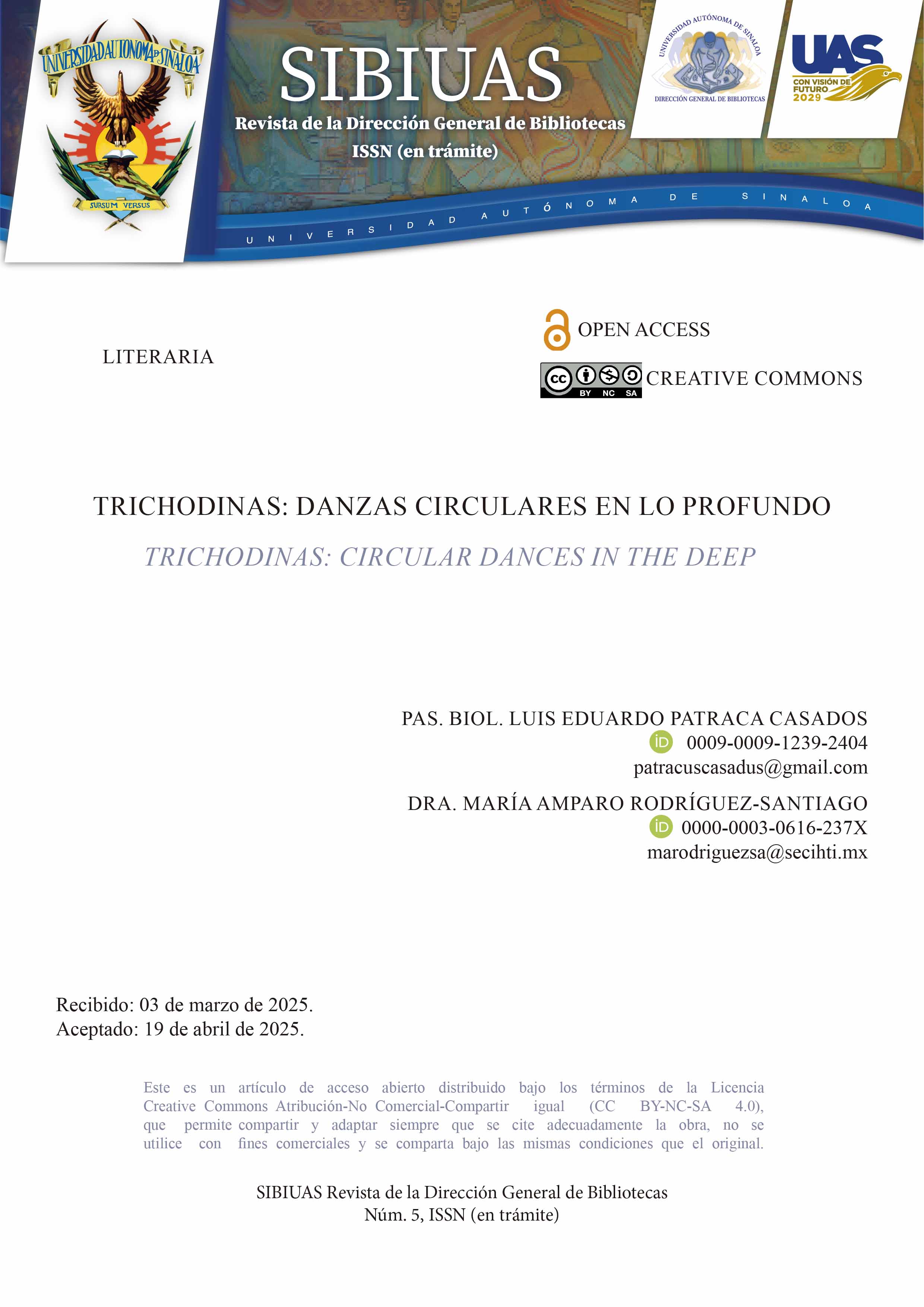Trichodinas: circular dances in the deep
Keywords:
ciliated protozoa, ectoparasites, aquatic organismsAbstract
In the deep abyss, where light barely dares to descend, where bodies float like remnants of ancient times, a silent ritual unfolds, a feast of invisible dances. No choirs sing their glory, no poets write their deeds, and yet, there they are, spinning in circles,
like eternal priestesses of the minuscule. They are the trichodinas, guardians of balance, sentinels of the infinitesimal, orchestrating their microscopic ballet upon the skin of their hosts. They dance unseen, unnoticed, unicellular dancers, tiny beings.
Their cilia, subtle threads of silver, guide them, cradle them, carry them in their dance,
seeking the nectar of their hope. No heart, no bone, no skin, yet still, they pulse, they dream. For in their sphere, so minute, dwells life complete and absolute. Their bodies, crafted with the perfection of a mechanical star,,spin with graceful precision, clinging to the surface of fish and aquatic creatures. A toothed ring, like a chariot wheel of war, holds secrets in its structure, carved with art, forged in life, driving them in their perpetual dance. Their denticles, fine as the dawn, woven of threads in a silent dance,
cling with strength to the water’s breath, sustaining their journey in their enchanted web. The sickle, curve of a sleeping moon, its center, a ray of light each fragment fulfills its cross, with microfibrils that bind their essence, a heartbeat of eternal presence.
They seek no destruction, nor domination, only to exist in the subtle art of exchange:
to cleanse, to remove, to partake in the fate of those who host them. They are artisans of biological flow, weavers of what the eye ignores. Yet let not the observer, in his arrogance, judge their size as a sign of insignificance. For in their microscopic forge, destinies are shaped; in their geometry, the secrets of time dance.
They are ancient, witnesses of submerged eras, of sunken kingdoms and extinct lineages. Perhaps, when the first organisms glided through the warmth of the primordial ocean, they were already tracing their spirals, inscribing their code into the symphony of life. Bacteria and cells, delicate and tender, dissolve within their eternal dance, floating detritus in their carousel, following the rhythm of a faithful cycle. And so they continue, unseen to the untrained eye,yet omnipresent in the waters of the world.
They coil, they spin, they trace their dance in the deep, while time itself seems to whirl with them. Who, but the gods of the abyss, could recognize their art? Who could understand their cosmic choreography, their circular dance in the depths? Who, if not even parasitologists, can unravel their fertile mystery?. Only in the stillness of their secret dance is hidden the knowledge that is never complete. And though scholars may search in books, in the waves of the sea, it is the trichodinids who truly know how to dance.
Downloads
References
Rodríguez-Santiago, M.A., García-Magaña, L., Grano-Maldonado, M.I., Silva-Martínez, E.N., Guerra-Santos, J. & Gelabert, R. 2019. Primer registro de Trichodina centrostrigeata Basson, Van As & Paperna, 1983 (Ciliophora: Trichodinidae) de Oreochromis niloticus (Linnaeus, 1758) cultivado en el sureste de México. Latin American Journal of Aquatic Research, 47: 367-370. doi: 10.3856/vol47-issue2-fulltext-18
Rodríguez-Santiago, M.A., Álvarez-Borrego, J., Fajer-Ávila, E.J., Oliver, J.A.I. & Fernandez-Martínez, C.N. 2021. Invariant correlation with species-specific composite filters for the recognition of trichodinids (Ciliophora: Peritrichida) parasitizing Oreochromis niloticus (Linnaeus, 1758) based on morphology. Neotropical Helminthology, 15: 179-191. doi: 10.24039/rnh20211521223

Downloads
Published
Issue
Section
Categories
License
Copyright (c) 2025 SIBIUAS Revista de la Dirección General de Bibliotecas

This work is licensed under a Creative Commons Attribution-NoDerivatives 4.0 International License.

